Are you guys ready to have some serious fun? Good, because this topic is going to get nuts. I'm serious. Anyway, we've learned from prior topics that 1,5-dicarbonyls have the ability to undergo intramolecular self-condensation and form 6-membered enones. Remember, we drew these before. What's different now is that we've also learned a reaction that makes 1,5-dicarbonyl compounds, and that's a Michael reaction. When the 1,5-dicarbonyl is generated from a Michael reaction, that means that you had an enone and an enolate come together to make a 1,5-dicarbonyl. When that molecule cyclizes, that's called a Robinson annulation. Essentially, this is an aldol times three. How is that? Well, because think about it. You had to use one aldol to make the original enone, the alpha, beta unsaturated, that's one aldol. Then use the second aldol, the enolate, to attack it via conjugate addition. When you did the conjugate addition, now you made the 1,5-dicarbonyl. But what we're saying now is that the 1,5-dicarbonyl is going to cyclize on itself and make a new 6-membered enone. That's the third aldol and that's all enolate mediated. I know. It's too much fun, right? You're not allowed to have this much fun in organic chemistry. Anyway, here's an example of a Michael product because I've got a 1,5-dicarbonyl. Again, I would be faced with the choice: where do I put the enolate? Do I put it in the blue or in the red position? You're going to put it in the position that's going to give you the 6-membered ring. If I use the red one to attack this carbonyl, do I get a 6-membered ring? I get 4: 1, 2, 3, 4. However, if I use the blue one, 1, 2, 3, 4, 5. Yes, I get what I'm looking for, guys. This is called the Robinson annulation. What I'm going to do first is I'm going to help you guys draw the product and then we'll do one from scratch. For this, this molecule is really easy to draw. Once you have everything numbered out, you can draw your 6-membered ring. I'm going to continue to keep those positions the way that I had them where I have 1, 2, 3, 4, 5, 6. Now I just have to figure out what am I missing on each of these atoms. Position 2 is going to be a ketone. Position 6 is going to be an alcohol and it's also going to have a methyl group. That's the product. But we know that these like to dehydrate. I guess I shouldn't have drawn it in the box. My bad. But the final product of this would be a methyl group here, a double bond here, and that is your cyclic enone. We've done this before. But now, annulation because it started off with a 1,5-dicarbonyl that was made through a Michael reaction. It is similar to what we've already done but just connected to conjugate addition. What I want you guys to do for this product is notice that I'm starting off from the Michael reaction. In this one, I'm starting from Michael because what I have is an enone and what is going to be an enolate. I want you guys to react those together, get your Michael product, and then do the Robinson annulation for that. Try your hardest, and then I will come in and save the day eventually.
- 1. A Review of General Chemistry5h 5m
- Summary23m
- Intro to Organic Chemistry5m
- Atomic Structure16m
- Wave Function9m
- Molecular Orbitals17m
- Sigma and Pi Bonds9m
- Octet Rule12m
- Bonding Preferences12m
- Formal Charges6m
- Skeletal Structure14m
- Lewis Structure20m
- Condensed Structural Formula15m
- Degrees of Unsaturation15m
- Constitutional Isomers14m
- Resonance Structures46m
- Hybridization23m
- Molecular Geometry16m
- Electronegativity22m
- 2. Molecular Representations1h 14m
- 3. Acids and Bases2h 46m
- 4. Alkanes and Cycloalkanes4h 19m
- IUPAC Naming29m
- Alkyl Groups13m
- Naming Cycloalkanes10m
- Naming Bicyclic Compounds10m
- Naming Alkyl Halides7m
- Naming Alkenes3m
- Naming Alcohols8m
- Naming Amines15m
- Cis vs Trans21m
- Conformational Isomers13m
- Newman Projections14m
- Drawing Newman Projections16m
- Barrier To Rotation7m
- Ring Strain8m
- Axial vs Equatorial7m
- Cis vs Trans Conformations4m
- Equatorial Preference14m
- Chair Flip9m
- Calculating Energy Difference Between Chair Conformations17m
- A-Values17m
- Decalin7m
- 5. Chirality3h 39m
- Constitutional Isomers vs. Stereoisomers9m
- Chirality12m
- Test 1:Plane of Symmetry7m
- Test 2:Stereocenter Test17m
- R and S Configuration43m
- Enantiomers vs. Diastereomers13m
- Atropisomers9m
- Meso Compound12m
- Test 3:Disubstituted Cycloalkanes13m
- What is the Relationship Between Isomers?16m
- Fischer Projection10m
- R and S of Fischer Projections7m
- Optical Activity5m
- Enantiomeric Excess20m
- Calculations with Enantiomeric Percentages11m
- Non-Carbon Chiral Centers8m
- 6. Thermodynamics and Kinetics1h 22m
- 7. Substitution Reactions1h 48m
- 8. Elimination Reactions2h 30m
- 9. Alkenes and Alkynes2h 9m
- 10. Addition Reactions3h 18m
- Addition Reaction6m
- Markovnikov5m
- Hydrohalogenation6m
- Acid-Catalyzed Hydration17m
- Oxymercuration15m
- Hydroboration26m
- Hydrogenation6m
- Halogenation6m
- Halohydrin12m
- Carbene12m
- Epoxidation8m
- Epoxide Reactions9m
- Dihydroxylation8m
- Ozonolysis7m
- Ozonolysis Full Mechanism24m
- Oxidative Cleavage3m
- Alkyne Oxidative Cleavage6m
- Alkyne Hydrohalogenation3m
- Alkyne Halogenation2m
- Alkyne Hydration6m
- Alkyne Hydroboration2m
- 11. Radical Reactions1h 58m
- 12. Alcohols, Ethers, Epoxides and Thiols2h 42m
- Alcohol Nomenclature4m
- Naming Ethers6m
- Naming Epoxides18m
- Naming Thiols11m
- Alcohol Synthesis7m
- Leaving Group Conversions - Using HX11m
- Leaving Group Conversions - SOCl2 and PBr313m
- Leaving Group Conversions - Sulfonyl Chlorides7m
- Leaving Group Conversions Summary4m
- Williamson Ether Synthesis3m
- Making Ethers - Alkoxymercuration4m
- Making Ethers - Alcohol Condensation4m
- Making Ethers - Acid-Catalyzed Alkoxylation4m
- Making Ethers - Cumulative Practice10m
- Ether Cleavage8m
- Alcohol Protecting Groups3m
- t-Butyl Ether Protecting Groups5m
- Silyl Ether Protecting Groups10m
- Sharpless Epoxidation9m
- Thiol Reactions6m
- Sulfide Oxidation4m
- 13. Alcohols and Carbonyl Compounds2h 17m
- 14. Synthetic Techniques1h 26m
- 15. Analytical Techniques:IR, NMR, Mass Spect7h 3m
- Purpose of Analytical Techniques5m
- Infrared Spectroscopy16m
- Infrared Spectroscopy Table31m
- IR Spect:Drawing Spectra40m
- IR Spect:Extra Practice26m
- NMR Spectroscopy10m
- 1H NMR:Number of Signals26m
- 1H NMR:Q-Test26m
- 1H NMR:E/Z Diastereoisomerism8m
- H NMR Table24m
- 1H NMR:Spin-Splitting (N + 1) Rule22m
- 1H NMR:Spin-Splitting Simple Tree Diagrams11m
- 1H NMR:Spin-Splitting Complex Tree Diagrams12m
- 1H NMR:Spin-Splitting Patterns8m
- NMR Integration18m
- NMR Practice14m
- Carbon NMR4m
- Structure Determination without Mass Spect47m
- Mass Spectrometry12m
- Mass Spect:Fragmentation28m
- Mass Spect:Isotopes27m
- 16. Conjugated Systems6h 13m
- Conjugation Chemistry13m
- Stability of Conjugated Intermediates4m
- Allylic Halogenation12m
- Reactions at the Allylic Position39m
- Conjugated Hydrohalogenation (1,2 vs 1,4 addition)26m
- Diels-Alder Reaction9m
- Diels-Alder Forming Bridged Products11m
- Diels-Alder Retrosynthesis8m
- Molecular Orbital Theory9m
- Drawing Atomic Orbitals6m
- Drawing Molecular Orbitals17m
- HOMO LUMO4m
- Orbital Diagram:3-atoms- Allylic Ions13m
- Orbital Diagram:4-atoms- 1,3-butadiene11m
- Orbital Diagram:5-atoms- Allylic Ions10m
- Orbital Diagram:6-atoms- 1,3,5-hexatriene13m
- Orbital Diagram:Excited States4m
- Pericyclic Reaction10m
- Thermal Cycloaddition Reactions26m
- Photochemical Cycloaddition Reactions26m
- Thermal Electrocyclic Reactions14m
- Photochemical Electrocyclic Reactions10m
- Cumulative Electrocyclic Problems25m
- Sigmatropic Rearrangement17m
- Cope Rearrangement9m
- Claisen Rearrangement15m
- 17. Ultraviolet Spectroscopy51m
- 18. Aromaticity2h 34m
- 19. Reactions of Aromatics: EAS and Beyond5h 1m
- Electrophilic Aromatic Substitution9m
- Benzene Reactions11m
- EAS:Halogenation Mechanism6m
- EAS:Nitration Mechanism9m
- EAS:Friedel-Crafts Alkylation Mechanism6m
- EAS:Friedel-Crafts Acylation Mechanism5m
- EAS:Any Carbocation Mechanism7m
- Electron Withdrawing Groups22m
- EAS:Ortho vs. Para Positions4m
- Acylation of Aniline9m
- Limitations of Friedel-Crafts Alkyation19m
- Advantages of Friedel-Crafts Acylation6m
- Blocking Groups - Sulfonic Acid12m
- EAS:Synergistic and Competitive Groups13m
- Side-Chain Halogenation6m
- Side-Chain Oxidation4m
- Reactions at Benzylic Positions31m
- Birch Reduction10m
- EAS:Sequence Groups4m
- EAS:Retrosynthesis29m
- Diazo Replacement Reactions6m
- Diazo Sequence Groups5m
- Diazo Retrosynthesis13m
- Nucleophilic Aromatic Substitution28m
- Benzyne16m
- 20. Phenols55m
- 21. Aldehydes and Ketones: Nucleophilic Addition4h 56m
- Naming Aldehydes8m
- Naming Ketones7m
- Oxidizing and Reducing Agents9m
- Oxidation of Alcohols28m
- Ozonolysis7m
- DIBAL5m
- Alkyne Hydration9m
- Nucleophilic Addition8m
- Cyanohydrin11m
- Organometallics on Ketones19m
- Overview of Nucleophilic Addition of Solvents13m
- Hydrates6m
- Hemiacetal9m
- Acetal12m
- Acetal Protecting Group16m
- Thioacetal6m
- Imine vs Enamine15m
- Addition of Amine Derivatives5m
- Wolff Kishner Reduction7m
- Baeyer-Villiger Oxidation39m
- Acid Chloride to Ketone7m
- Nitrile to Ketone9m
- Wittig Reaction18m
- Ketone and Aldehyde Synthesis Reactions14m
- 22. Carboxylic Acid Derivatives: NAS2h 51m
- Carboxylic Acid Derivatives7m
- Naming Carboxylic Acids9m
- Diacid Nomenclature6m
- Naming Esters5m
- Naming Nitriles3m
- Acid Chloride Nomenclature5m
- Naming Anhydrides7m
- Naming Amides5m
- Nucleophilic Acyl Substitution18m
- Carboxylic Acid to Acid Chloride6m
- Fischer Esterification5m
- Acid-Catalyzed Ester Hydrolysis4m
- Saponification3m
- Transesterification5m
- Lactones, Lactams and Cyclization Reactions10m
- Carboxylation5m
- Decarboxylation Mechanism14m
- Review of Nitriles46m
- 23. The Chemistry of Thioesters, Phophate Ester and Phosphate Anhydrides1h 10m
- 24. Enolate Chemistry: Reactions at the Alpha-Carbon1h 53m
- Tautomerization9m
- Tautomers of Dicarbonyl Compounds6m
- Enolate4m
- Acid-Catalyzed Alpha-Halogentation4m
- Base-Catalyzed Alpha-Halogentation3m
- Haloform Reaction8m
- Hell-Volhard-Zelinski Reaction3m
- Overview of Alpha-Alkylations and Acylations5m
- Enolate Alkylation and Acylation12m
- Enamine Alkylation and Acylation16m
- Beta-Dicarbonyl Synthesis Pathway7m
- Acetoacetic Ester Synthesis13m
- Malonic Ester Synthesis15m
- 25. Condensation Chemistry2h 9m
- 26. Amines1h 43m
- 27. Heterocycles2h 0m
- Nomenclature of Heterocycles15m
- Acid-Base Properties of Nitrogen Heterocycles10m
- Reactions of Pyrrole, Furan, and Thiophene13m
- Directing Effects in Substituted Pyrroles, Furans, and Thiophenes16m
- Addition Reactions of Furan8m
- EAS Reactions of Pyridine17m
- SNAr Reactions of Pyridine18m
- Side-Chain Reactions of Substituted Pyridines20m
- 28. Carbohydrates5h 53m
- Monosaccharide20m
- Monosaccharides - D and L Isomerism9m
- Monosaccharides - Drawing Fischer Projections18m
- Monosaccharides - Common Structures6m
- Monosaccharides - Forming Cyclic Hemiacetals12m
- Monosaccharides - Cyclization18m
- Monosaccharides - Haworth Projections13m
- Mutarotation11m
- Epimerization9m
- Monosaccharides - Aldose-Ketose Rearrangement8m
- Monosaccharides - Alkylation10m
- Monosaccharides - Acylation7m
- Glycoside6m
- Monosaccharides - N-Glycosides18m
- Monosaccharides - Reduction (Alditols)12m
- Monosaccharides - Weak Oxidation (Aldonic Acid)7m
- Reducing Sugars23m
- Monosaccharides - Strong Oxidation (Aldaric Acid)11m
- Monosaccharides - Oxidative Cleavage27m
- Monosaccharides - Osazones10m
- Monosaccharides - Kiliani-Fischer23m
- Monosaccharides - Wohl Degradation12m
- Monosaccharides - Ruff Degradation12m
- Disaccharide30m
- Polysaccharide11m
- 29. Amino Acids3h 20m
- Proteins and Amino Acids19m
- L and D Amino Acids14m
- Polar Amino Acids14m
- Amino Acid Chart18m
- Acid-Base Properties of Amino Acids33m
- Isoelectric Point14m
- Amino Acid Synthesis: HVZ Method12m
- Synthesis of Amino Acids: Acetamidomalonic Ester Synthesis16m
- Synthesis of Amino Acids: N-Phthalimidomalonic Ester Synthesis13m
- Synthesis of Amino Acids: Strecker Synthesis13m
- Reactions of Amino Acids: Esterification7m
- Reactions of Amino Acids: Acylation3m
- Reactions of Amino Acids: Hydrogenolysis6m
- Reactions of Amino Acids: Ninhydrin Test11m
- 30. Peptides and Proteins2h 42m
- Peptides12m
- Primary Protein Structure4m
- Secondary Protein Structure17m
- Tertiary Protein Structure11m
- Disulfide Bonds17m
- Quaternary Protein Structure10m
- Summary of Protein Structure7m
- Intro to Peptide Sequencing2m
- Peptide Sequencing: Partial Hydrolysis25m
- Peptide Sequencing: Partial Hydrolysis with Cyanogen Bromide7m
- Peptide Sequencing: Edman Degradation28m
- Merrifield Solid-Phase Peptide Synthesis18m
- 31. Catalysis in Organic Reactions1h 30m
- 32. Lipids 2h 50m
- 34. Nucleic Acids1h 32m
- 35. Transition Metals6h 14m
- Electron Configuration of Elements45m
- Coordination Complexes20m
- Ligands24m
- Electron Counting10m
- The 18 and 16 Electron Rule13m
- Cross-Coupling General Reactions40m
- Heck Reaction40m
- Stille Reaction13m
- Suzuki Reaction25m
- Sonogashira Coupling Reaction17m
- Fukuyama Coupling Reaction15m
- Kumada Coupling Reaction13m
- Negishi Coupling Reaction16m
- Buchwald-Hartwig Amination Reaction19m
- Eglinton Reaction17m
- Catalytic Allylic Alkylation18m
- Alkene Metathesis23m
- 36. Synthetic Polymers1h 49m
- Introduction to Polymers6m
- Chain-Growth Polymers10m
- Radical Polymerization15m
- Cationic Polymerization8m
- Anionic Polymerization8m
- Polymer Stereochemistry3m
- Ziegler-Natta Polymerization4m
- Copolymers6m
- Step-Growth Polymers11m
- Step-Growth Polymers: Urethane6m
- Step-Growth Polymers: Polyurethane Mechanism10m
- Step-Growth Polymers: Epoxy Resin8m
- Polymers Structure and Properties8m
Robinson Annulation: Study with Video Lessons, Practice Problems & Examples
 Created using AI
Created using AIThe Robinson annulation is a key reaction involving the formation of 6-membered enones from 15 dicarbonyl compounds generated via a Michael reaction. This process combines aldol condensation and conjugate addition, where an enone and an enolate react to create a 15 dicarbonyl, which then cyclizes. The resulting product features a ketone and an alcohol, often undergoing dehydration to yield a cyclic enone. Understanding this mechanism is crucial for mastering complex organic synthesis pathways and the interplay of various reaction types.
1,5-dicarbonyl compounds generated from the Michael Reaction (enone + enolate) have the ability to undergo intramolecular self-condensation into 6-membered enones. Are you impressed yet?
Robinson Annulation
Video transcript
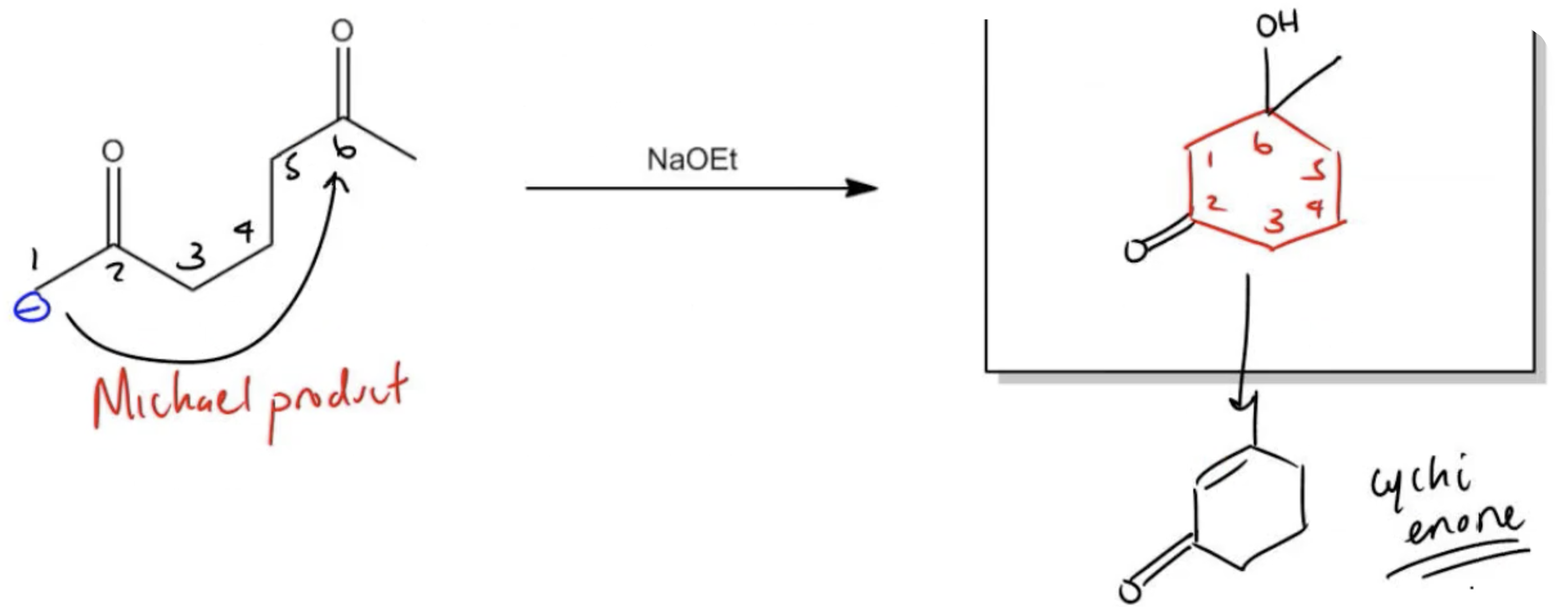
Predict the Major Product
Video transcript
Let's start off with the Michael product. That part's pretty easy to draw, guys, because I told you that for Michael reactions, I always like to draw the enol in the same way it was before and then just put the enolate on top. I would just put my enolate on the top like this. That's not bad because I know that my enolate is going to form there. Fair? Cool. Now I have to figure out where to form an enolate so that it can cyclize into a 6-member ring. I've got, I guess, 4 possibilities. I've got my black, I've got my red, I've got my blue, and I've got my green. Notice I've got a bunch of different possibilities here. What we're wondering is which one is going to make the best 6-member ring. There are 2 that I can count out immediately and that's red and blue. The reason is because red is only 4 away from this carbonyl. Blue is only 4 away from this one. I can cross those out. I'm just going to put a cross. Those aren't going to work. Now it's between black and green. Black is 6 carbons away, so this looks like it's a possibility. Green is 1, 2, 3, 4, 5, 6 carbons away as well. But we have an issue, which is that 3 of the carbons within this chain are also in a ring. If I use the green one, I'm going to wind up getting a bicyclic product. Ideally, I'm trying to avoid using multiple atoms in my chain that are also in a ring. Notice that if I use look at the difference. If I use black, how many of my atoms are in the ring? Just 2. I have one; let me start. I have too many numbers going on now. I hope you guys are learning about this. If I start from black, I have 1, 2, 3, 4, 5, 6. Notice that only 2 of the atoms are within the ring. Now if I start from green, 1, 2, 3. The first three atoms of that chain are in the ring. I'm going to wind up getting a bridge compound. It's going to be kind of difficult to draw. Let's draw the other one instead. The other one is going to be more stable. For this compound, because I have a ring involved, I would recommend against doing my system where you draw a cyclohexane and then number it. I would try to rearrange this so it looks more like the enone that it's going to make soon. I'm going to rotate this bond. If you rotate this bond, it's going to look more like what it will eventually look like. I'm going to draw it like this now. I've got this molecule here,Doul bond O. But now I've got my methyl here and my carbonyl here. Notice that all I did was I rotated it. This is much better because if my negative is here and my positive is here, I see that I can just do this. That's going to be my 6-membered ring. What I'm going to get is a 6-membered ring that looks like this, a new 6-membered ring that has another 6-membered ring on it. This is the fun part about using Michael reactions. What are we missing on this thing? This ketone still exists. Nothing happened to that. Here, I should actually have an O− but that's going to get protonated to an alcohol. Eventually, this is going to be dehydrated. The direction it gets dehydrated is towards the alpha-beta. That means that my enone is going to form right here. That's going to be the final product of this reaction, my cyclic enone. As you can see, this is one of the hardest reactions in organic chemistry. It's difficult to visualize. It's kind of bulky, clunky, difficult to even conceptualize sometimes. I hope that I've made it a little bit more clear. I'm really trying to do this in a stepwise fashion, so that every step of the way, you're like, I guess that makes sense. You're not completely lost. But at the end of the day, Robinson emulation is a product that you'll have to practice drawing because you have to get good at it. All right, guys, so that's it for this topic. Let's move on.
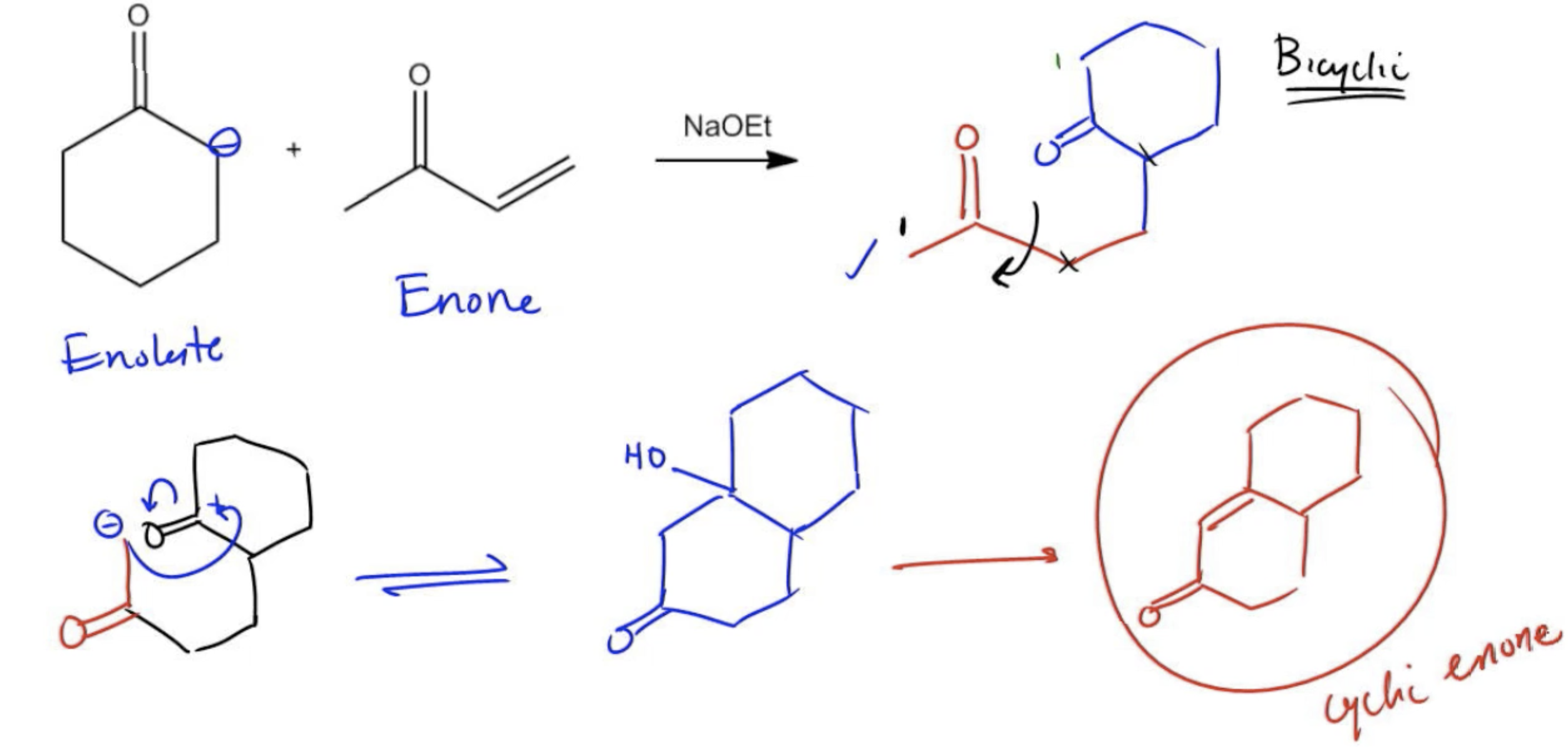
Provide the product for the following Robinson Annulation Reaction.

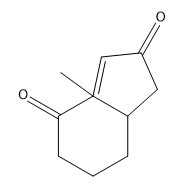
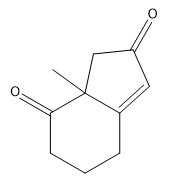
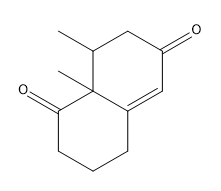

If you noticed a methyl group that vanished around 3:50 in the above video, you are not alone! Place a methyl there in your final answer and you will be good:)
How would you prepare the following compound using a Robinson annulation reaction between a di-ketone and an alpha, beta unsaturated ketone?
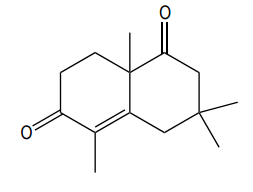

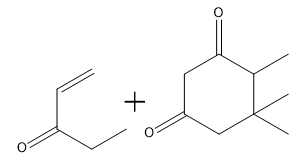
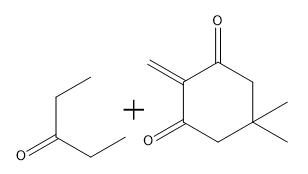
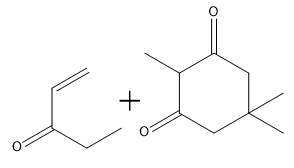
How would you prepare the following compound using a Robinson annulation reaction between a ketone and an alpha, beta unsaturated ketone?
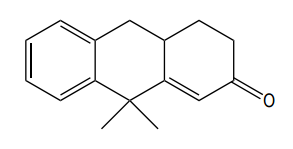

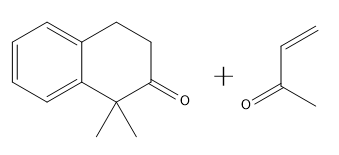


Great job, guys! You survived.
Do you want more practice?
More setsRobinson annulation is a reaction between an enolate and an alpha, beta-unsaturated ketone that forms a ring.
Robinson annulation mechanism
The very first part of Robinson annulation is basically a base-catalyzed Michael reaction, in which an enolate attacks a conjugated ketone or aldehyde. Let's check it out! To be clear, we're not looking at the actual Robinson annulation just yet.

Michael Addition
Okay, let's get to the heart of this post: Robinson annulation. Let’s take a look at the mechanism. The very first step is the addition of base to remove the alpha proton to form the enolate. Once the enolate is formed, it can can attack the electrophilic enone. We’ll use an alkoxide as our base in this example.

Enolate Formation and Conjugate Addition

Second Enone Formation
From there, another enone is formed. That enol is actually deprotonated, but there’s something to keep in mind: the enolate that forms is the one that actually forms the ring, so we need to count the number of atoms from the enolate to the carbonyl. The most stable ring-size is 6, so we want to get as close to that as possible.

Enolate Formation and Nucleophilic Addition
The green alpha-hydrogen is deprotonated, and it then attacks the carbonyl leaving us with an alcohol.

Ring Formation and Dehydration
That alcohol undergoes dehydration through an E1cB mechanism, which is a special kind of elimination, and we end up with yet another enone! Notice that the alcohol dehydrated “toward” the ketone. Why? Resonance! Conjugated molecules are more stable, so the enone is favored over the isolated double bond.
Here's the whole mechanism in one piece to see it in all its glory:

Full mechanism
Here’s what students ask on this topic:
What is the Robinson annulation reaction?
The Robinson annulation is a reaction that forms 6-membered enones from 1,5-dicarbonyl compounds generated via a Michael reaction. It involves a sequence of reactions: first, a Michael addition where an enone and an enolate react to form a 1,5-dicarbonyl compound. This intermediate then undergoes intramolecular aldol condensation, leading to the formation of a 6-membered ring. The final product is often a cyclic enone, which may undergo dehydration. This reaction is crucial for synthesizing complex organic molecules and understanding the interplay between different reaction mechanisms.
 Created using AI
Created using AIHow does the Michael reaction contribute to the Robinson annulation?
The Michael reaction is the first step in the Robinson annulation. It involves the conjugate addition of an enolate to an α,β-unsaturated carbonyl compound (enone), forming a 1,5-dicarbonyl compound. This intermediate is essential for the subsequent intramolecular aldol condensation, which cyclizes to form a 6-membered enone. The Michael reaction thus sets the stage for the Robinson annulation by creating the necessary 1,5-dicarbonyl precursor.
 Created using AI
Created using AIWhat are the key steps in the Robinson annulation mechanism?
The Robinson annulation mechanism involves three key steps: (1) Michael addition, where an enolate adds to an α,β-unsaturated carbonyl compound to form a 1,5-dicarbonyl compound; (2) intramolecular aldol condensation, where the 1,5-dicarbonyl compound cyclizes to form a 6-membered ring; and (3) dehydration, where the aldol product loses water to form a cyclic enone. These steps combine to create a complex, cyclic structure from simpler starting materials.
 Created using AI
Created using AIWhy is the Robinson annulation important in organic synthesis?
The Robinson annulation is important in organic synthesis because it allows for the efficient construction of complex, cyclic molecules from simpler precursors. This reaction is particularly valuable for forming 6-membered rings, which are common in many natural products and pharmaceuticals. By combining Michael addition and aldol condensation, the Robinson annulation provides a versatile and powerful tool for building intricate molecular architectures, making it a staple in synthetic organic chemistry.
 Created using AI
Created using AIWhat are some common applications of the Robinson annulation in real-world chemistry?
The Robinson annulation is widely used in the synthesis of natural products, pharmaceuticals, and complex organic molecules. For example, it is employed in the synthesis of steroids, which have a characteristic 6-membered ring structure. Additionally, the reaction is used in the preparation of various alkaloids and terpenes, which are important in medicinal chemistry. The ability to form 6-membered rings efficiently makes the Robinson annulation a valuable reaction in both academic research and industrial applications.
 Created using AI
Created using AIYour Organic Chemistry tutors
- Draw the product obtained by heating each pair of ketones in a basic solution. a.
- Draw the product obtained by heating each pair of ketones in a basic solution. b.
- What two carbonyl compounds are needed to synthesize each of the following compounds, using a Robinson annulat...
- Show how you would use the Robinson annulation to synthesize the following compounds. (a)
- Propose a mechanism for the following reaction. < of reaction>
- Propose mechanisms for the following reactions. (c) < of reaction>
- Show how you would use the Robinson annulation to synthesize the following compounds. (b)
- Show how you would use the Robinson annulation to synthesize the following compounds. (c)
- Predict the product of the following reactions.a. <IMAGE>
- Predict the product of the following reactions.b. <IMAGE>
- Show how the following molecule might be synthesized using the Robinson annulation.<IMAGE>
- Propose mechanisms for the following reactions.(d) <IMAGE of reaction>
- The base-catalyzed reaction of an aldehyde (having no α hydrogens) with an anhydride is called the Perkin cond...
- The base-catalyzed reaction of an aldehyde (having no α hydrogens) with an anhydride is called the Perkin cond...
- Show how you would use Robinson annulations to synthesize the following compounds. Work backward,remembering t...
- Show how you would use Robinson annulations to synthesize the following compounds. Work backward,remembering t...

